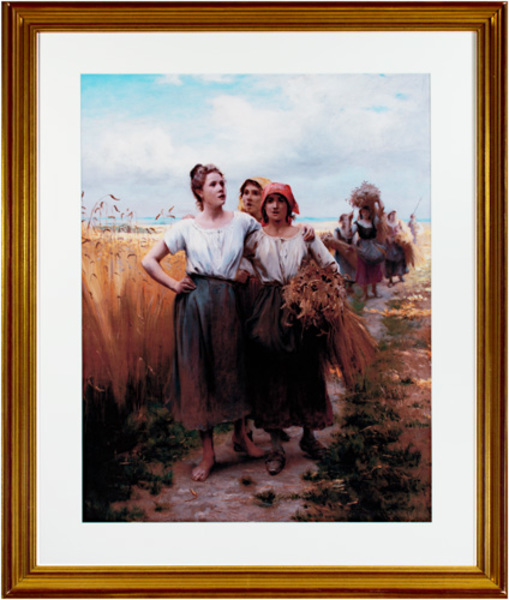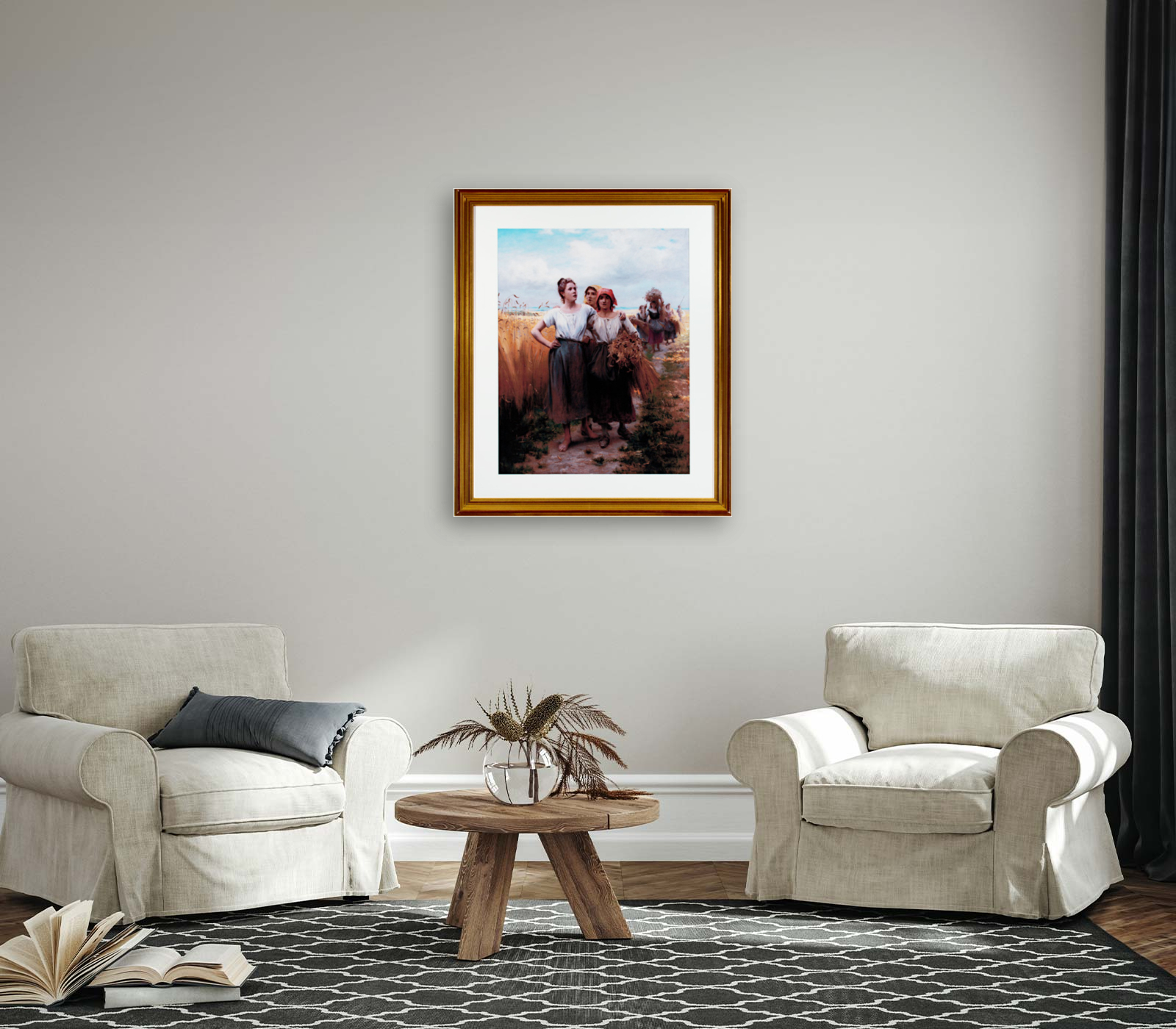La Chanson de la Moisson (Harvest Song)
Georges Francois Paul Laugee
La Chanson de la Moisson (Harvest Song)
Artist:
Georges Francois Paul Laugee
Medium: Prints
Price:
$3,480.00
Gallery:
David Barnett Gallery
Add to Favorites
Details
Creation Date: 2002
Materials: Giclee
Dimensions: 43" x 35" x 1"
Finish: Framed
About the Artist
Georges Francois Paul Laugee
(1853- 1937) Georges Laugée was born in Montivilliers on December 19, 1853. His father, Désiré Laugée, was an important French Realist artist; a contemporary of Jules Breton and specialized in portraying workers in the field. Georges received his early training with his father and then, like many artists of his time, continued his studies at l’Ecole des Beaux-Arts. There he studied at the ateliers of Isidore Pils and Henri Lehmann where he mastered the art of life studies and sketching. In 1877 he made his debut at the Paris Salon and in 1881 was awarded the bronze medal for his Salon entries of that year: En Octobre and Pauvre aveugle. Following his love of nature and the farm worker, Laugée focused on scenes of everyday life. His works, often featuring the peasants tending their animals or working in the fields, are filled with light. Among the works that Georges chose to exhibit at the Paris Salons were his 1890 submissions Le Repos and Le Retour des Champs; his 1897 submission Sous l’averse (In the Storm) and his 1904 works Deux Amies and Au Temps des blés murs, which portrayed peasant girls in the country. At the Salon of 1906 he exhibited Soleil Couchant (Sunset) and Heure doreé (Golden Hour) and continued to exhibit works of similar subject matter through 1928. In 1889 he participated in the Exposition Universelle, where he received a bronze medal and in the Exposition Universelle of 1900 was awarded the silver medal for his painting entitled Au printemps de la vie (In the Springtime). From 1907 – 1909 Laugée was a Membre du Comité de la Société des Artistes Français and was a member of the Jury at the Salon from 1908 – 1910. Laugée’s first atelier, located at 20, boulevard Flandrin, Paris, was also the home of the great Realist artist Julien Dupré (Laugée’s brother-in-law) and just after Dupré’s death in 1910, Laugee moved to 23, boulevard Lannes.
About the Gallery
David Barnett Gallery
The David Barnett Gallery is Wisconsin's premier gallery with the broadest range of art available in the region, including works of art that represent more than 600 artists. The gallery specializes in European and American masters, regional and nationally recognized artists and emerging artists. This gallery also offers museum quality custom framing, restoration, conservation, appraisals, printing, transportation and delivery.
Similar Artworks
Similar Artists
More from this Seller







 Facebook
Facebook
 X
X
 Email
Email
























